This is the source about a nice project that achieve exactly what your search:
public enum EGFloatingTextFieldValidationType {
case Email
case Number
}
public class EGFloatingTextField: UITextField {
private typealias EGFloatingTextFieldValidationBlock = ((text:String,inout message:String)-> Bool)!
public var validationType : EGFloatingTextFieldValidationType!
private var emailValidationBlock : EGFloatingTextFieldValidationBlock
private var numberValidationBlock : EGFloatingTextFieldValidationBlock
let kDefaultInactiveColor = UIColor(white: CGFloat(0), alpha: CGFloat(0.54))
let kDefaultActiveColor = UIColor.blueColor()
let kDefaultErrorColor = UIColor.redColor()
let kDefaultLineHeight = CGFloat(22)
let kDefaultLabelTextColor = UIColor(white: CGFloat(0), alpha: CGFloat(0.54))
public var floatingLabel : Bool!
var label : UILabel!
var labelFont : UIFont!
var labelTextColor : UIColor!
var activeBorder : UIView!
var floating : Bool!
var active : Bool!
var hasError : Bool!
var errorMessage : String!
required public init(coder aDecoder: NSCoder) {
super.init(coder: aDecoder)
self.commonInit()
}
override public init(frame: CGRect) {
super.init(frame: frame)
self.commonInit()
}
func commonInit(){
self.emailValidationBlock = ({(text:String, inout message: String) -> Bool in
var emailRegex = "[A-Z0-9a-z._%+-]+@[A-Za-z0-9.-]+\\.[A-Za-z]{2,6}"
var emailTest = NSPredicate(format:"SELF MATCHES %@" , emailRegex)
var isValid = emailTest.evaluateWithObject(text)
if !isValid {
message = "Invalid Email Address"
}
return isValid;
})
self.numberValidationBlock = ({(text:String,inout message: String) -> Bool in
var numRegex = "[0-9.+-]+";
var numTest = NSPredicate(format:"SELF MATCHES %@" , numRegex)
var isValid = numTest.evaluateWithObject(text)
if !isValid {
message = "Invalid Number"
}
return isValid;
})
self.floating = false
self.hasError = false
self.labelTextColor = kDefaultLabelTextColor
self.label = UILabel(frame: CGRectZero)
self.label.font = self.labelFont
self.label.textColor = self.labelTextColor
self.label.textAlignment = NSTextAlignment.Left
self.label.numberOfLines = 1
self.label.layer.masksToBounds = false
self.addSubview(self.label)
self.activeBorder = UIView(frame: CGRectZero)
self.activeBorder.backgroundColor = kDefaultActiveColor
self.activeBorder.layer.opacity = 0
self.addSubview(self.activeBorder)
self.label.autoAlignAxis(ALAxis.Horizontal, toSameAxisOfView: self)
self.label.autoPinEdge(ALEdge.Left, toEdge: ALEdge.Left, ofView: self)
self.label.autoMatchDimension(ALDimension.Width, toDimension: ALDimension.Width, ofView: self)
self.label.autoMatchDimension(ALDimension.Height, toDimension: ALDimension.Height, ofView: self)
self.activeBorder.autoPinEdge(ALEdge.Bottom, toEdge: ALEdge.Bottom, ofView: self)
self.activeBorder.autoPinEdge(ALEdge.Left, toEdge: ALEdge.Left, ofView: self)
self.activeBorder.autoPinEdge(ALEdge.Right, toEdge: ALEdge.Right, ofView: self)
self.activeBorder.autoSetDimension(ALDimension.Height, toSize: 2)
NSNotificationCenter.defaultCenter().addObserver(self, selector: Selector("textDidChange:"), name: "UITextFieldTextDidChangeNotification", object: self)
}
public func setPlaceHolder(placeholder:String){
self.label.text = placeholder
}
override public func becomeFirstResponder() -> Bool {
var flag:Bool = super.becomeFirstResponder()
if flag {
if self.floatingLabel! {
if !self.floating! || self.text!.isEmpty {
self.floatLabelToTop()
self.floating = true
}
} else {
self.label.textColor = kDefaultActiveColor
self.label.layer.opacity = 0
}
self.showActiveBorder()
}
self.active=flag
return flag
}
override public func resignFirstResponder() -> Bool {
var flag:Bool = super.becomeFirstResponder()
if flag {
if self.floatingLabel! {
if self.floating! && self.text!.isEmpty {
self.animateLabelBack()
self.floating = false
}
} else {
if self.text!.isEmpty {
self.label.layer.opacity = 1
}
}
self.label.textColor = kDefaultInactiveColor
self.showInactiveBorder()
self.validate()
}
self.active = flag
return flag
}
override public func drawRect(rect: CGRect){
super.drawRect(rect)
var borderColor = self.hasError! ? kDefaultErrorColor : kDefaultInactiveColor
var textRect = self.textRectForBounds(rect)
var context = UIGraphicsGetCurrentContext()
var borderlines : [CGPoint] = [CGPointMake(0, CGRectGetHeight(textRect) - 1),
CGPointMake(CGRectGetWidth(textRect), CGRectGetHeight(textRect) - 1)]
if self.enabled {
CGContextBeginPath(context);
CGContextAddLines(context, borderlines, 2);
CGContextSetLineWidth(context, 1.0);
CGContextSetStrokeColorWithColor(context, borderColor.CGColor);
CGContextStrokePath(context);
} else {
CGContextBeginPath(context);
CGContextAddLines(context, borderlines, 2);
CGContextSetLineWidth(context, 1.0);
var dashPattern : [CGFloat] = [2, 4]
CGContextSetLineDash(context, 0, dashPattern, 2);
CGContextSetStrokeColorWithColor(context, borderColor.CGColor);
CGContextStrokePath(context);
}
}
func textDidChange(notif: NSNotification){
self.validate()
}
func floatLabelToTop() {
CATransaction.begin()
CATransaction.setCompletionBlock { () -> Void in
self.label.textColor = self.kDefaultActiveColor
}
var anim2 = CABasicAnimation(keyPath: "transform")
var fromTransform = CATransform3DMakeScale(CGFloat(1.0), CGFloat(1.0), CGFloat(1))
var toTransform = CATransform3DMakeScale(CGFloat(0.5), CGFloat(0.5), CGFloat(1))
toTransform = CATransform3DTranslate(toTransform, -CGRectGetWidth(self.label.frame)/2, -CGRectGetHeight(self.label.frame), 0)
anim2.fromValue = NSValue(CATransform3D: fromTransform)
anim2.toValue = NSValue(CATransform3D: toTransform)
anim2.timingFunction = CAMediaTimingFunction(name: kCAMediaTimingFunctionEaseOut)
var animGroup = CAAnimationGroup()
animGroup.animations = [anim2]
animGroup.duration = 0.3
animGroup.fillMode = kCAFillModeForwards;
animGroup.removedOnCompletion = false;
self.label.layer.addAnimation(animGroup, forKey: "_floatingLabel")
self.clipsToBounds = false
CATransaction.commit()
}
func showActiveBorder() {
self.activeBorder.layer.transform = CATransform3DMakeScale(CGFloat(0.01), CGFloat(1.0), 1)
self.activeBorder.layer.opacity = 1
CATransaction.begin()
self.activeBorder.layer.transform = CATransform3DMakeScale(CGFloat(0.01), CGFloat(1.0), 1)
var anim2 = CABasicAnimation(keyPath: "transform")
var fromTransform = CATransform3DMakeScale(CGFloat(0.01), CGFloat(1.0), 1)
var toTransform = CATransform3DMakeScale(CGFloat(1.0), CGFloat(1.0), 1)
anim2.fromValue = NSValue(CATransform3D: fromTransform)
anim2.toValue = NSValue(CATransform3D: toTransform)
anim2.timingFunction = CAMediaTimingFunction(name: kCAMediaTimingFunctionEaseOut)
anim2.fillMode = kCAFillModeForwards
anim2.removedOnCompletion = false
self.activeBorder.layer.addAnimation(anim2, forKey: "_activeBorder")
CATransaction.commit()
}
func animateLabelBack() {
CATransaction.begin()
CATransaction.setCompletionBlock { () -> Void in
self.label.textColor = self.kDefaultInactiveColor
}
var anim2 = CABasicAnimation(keyPath: "transform")
var fromTransform = CATransform3DMakeScale(0.5, 0.5, 1)
fromTransform = CATransform3DTranslate(fromTransform, -CGRectGetWidth(self.label.frame)/2, -CGRectGetHeight(self.label.frame), 0);
var toTransform = CATransform3DMakeScale(1.0, 1.0, 1)
anim2.fromValue = NSValue(CATransform3D: fromTransform)
anim2.toValue = NSValue(CATransform3D: toTransform)
anim2.timingFunction = CAMediaTimingFunction(name: kCAMediaTimingFunctionEaseOut)
var animGroup = CAAnimationGroup()
animGroup.animations = [anim2]
animGroup.duration = 0.3
animGroup.fillMode = kCAFillModeForwards;
animGroup.removedOnCompletion = false;
self.label.layer.addAnimation(animGroup, forKey: "_animateLabelBack")
CATransaction.commit()
}
func showInactiveBorder() {
CATransaction.begin()
CATransaction.setCompletionBlock { () -> Void in
self.activeBorder.layer.opacity = 0
}
var anim2 = CABasicAnimation(keyPath: "transform")
var fromTransform = CATransform3DMakeScale(1.0, 1.0, 1)
var toTransform = CATransform3DMakeScale(0.01, 1.0, 1)
anim2.fromValue = NSValue(CATransform3D: fromTransform)
anim2.toValue = NSValue(CATransform3D: toTransform)
anim2.timingFunction = CAMediaTimingFunction(name: kCAMediaTimingFunctionEaseOut)
anim2.fillMode = kCAFillModeForwards
anim2.removedOnCompletion = false
self.activeBorder.layer.addAnimation(anim2, forKey: "_activeBorder")
CATransaction.commit()
}
func performValidation(isValid:Bool,message:String){
if !isValid {
self.hasError = true
self.errorMessage = message
self.labelTextColor = kDefaultErrorColor
self.activeBorder.backgroundColor = kDefaultErrorColor
self.setNeedsDisplay()
} else {
self.hasError = false
self.errorMessage = nil
self.labelTextColor = kDefaultActiveColor
self.activeBorder.backgroundColor = kDefaultActiveColor
self.setNeedsDisplay()
}
}
func validate(){
if self.validationType != nil {
var message : String = ""
if self.validationType! == .Email {
var isValid = self.emailValidationBlock(text: self.text, message: &message)
performValidation(isValid,message: message)
} else {
var isValid = self.numberValidationBlock(text: self.text, message: &message)
performValidation(isValid,message: message)
}
}
}
}
extension EGFloatingTextField {
}
His name is EGFloatingTextField and you can find more details here
Usage:
let emailLabel = EGFloatingTextField(frame: CGRectMake(8, 64, CGRectGetWidth(self.view.bounds) - 16, 48))
emailLabel.floatingLabel = true
emailLabel.setPlaceHolder("Email")
emailLabel.validationType = .Email
emailLabel.keyboardType = .EmailAddress
self.view.addSubview(emailLabel)
P.S. You need to import PureLayout library, here you can find the full source and instruction to how to import it.




